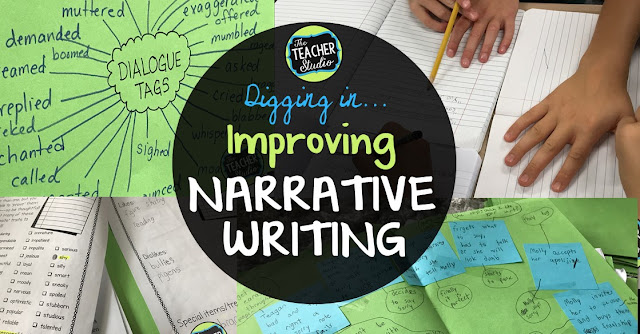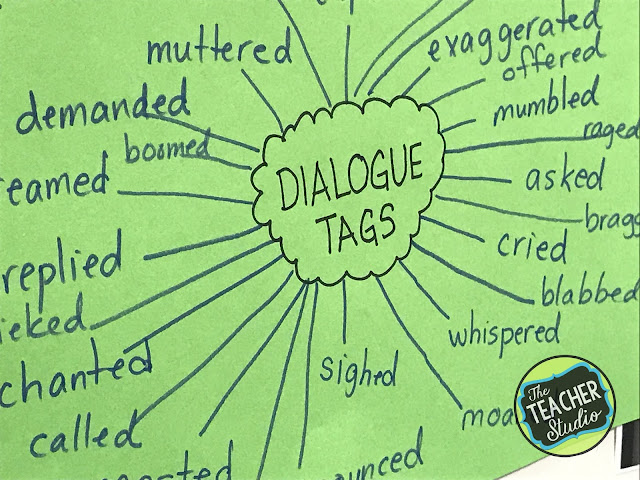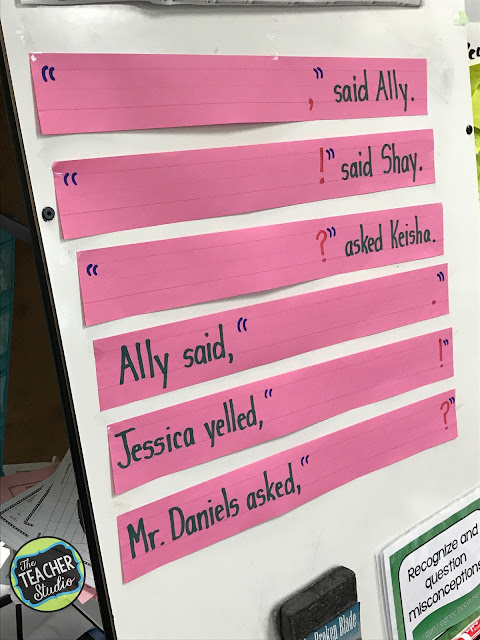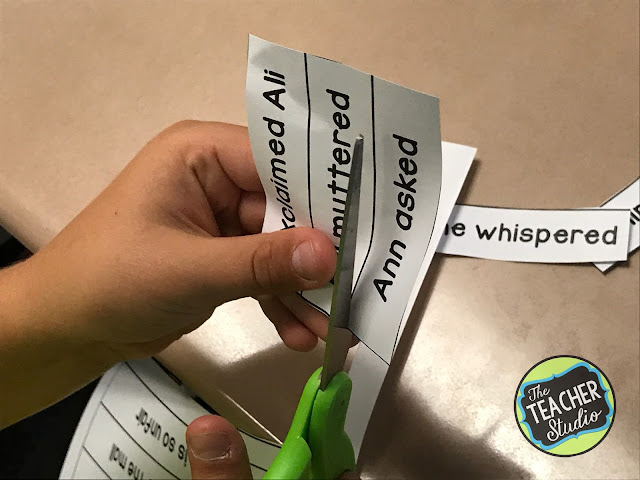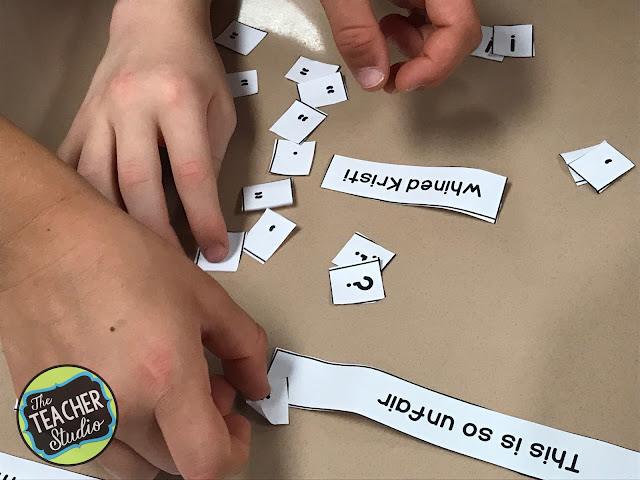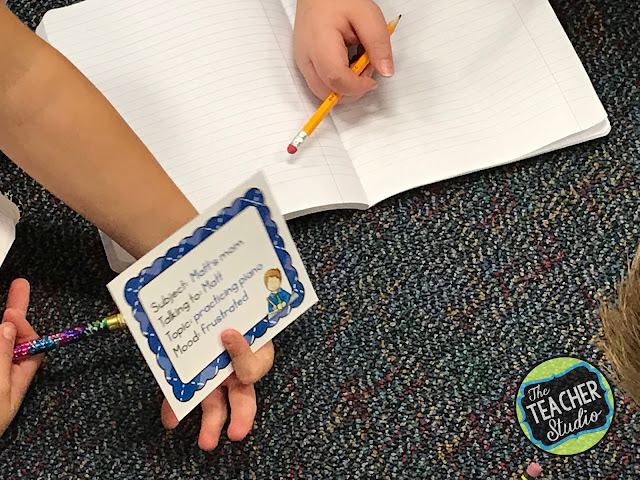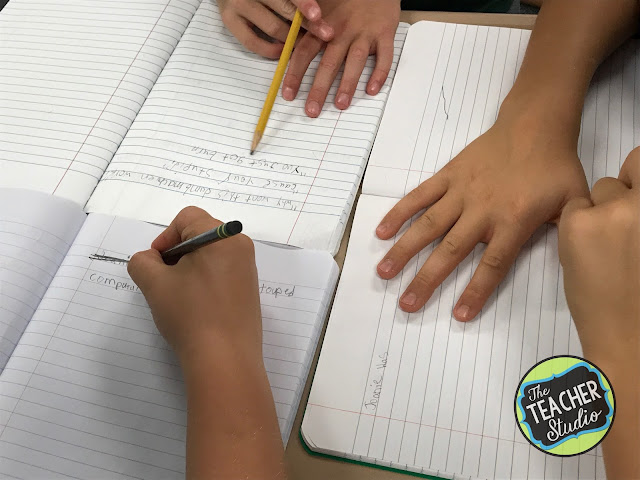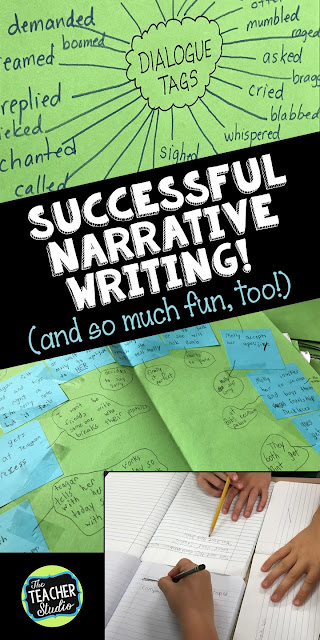Studying Characters in Narrative Writing Lessons
As we started our narrative unit several weeks ago, we spent a great deal of time studying our main read aloud, Fish in a Tree, along with other picture books I selected. We studied the characters, their traits, their actions, and then–finally–their words. We actually then worked to create our own characters that we would later insert into some “mini” narratives that we wrote. The students were SO engaged and I truly saw them thinking more deeply about the characters in their own books. (Note: This student had a bad experience with a pigeon…I guess my “hint” that authors often work their real life into their books paid off!)
Creating a Story Arc or “Story Map”
Learning how to write dialogue
As we started to realize all the ways writers help us get to know characters, I told my students we were going to work hard to do this with our own narratives–we were going to write so our reader can really get to know our characters. Students grabbed their own books (great because no matter WHAT level a child reads at, you can use this lesson) and searched for dialogue “tags”. We jotted them on sticky notes and then came back to the large group to do some sharing. I recorded their findings on a chart and then we talked about the messages writers can send by carefully choosing tags. What does “mumbled” show about a character instead of “shouted”? If a character “demands” something, what does it say about them?
Writing Dialogue
It was so much fun to see how creative they got! Their writing REALLY displayed their understanding of how characters can be revealed.
Using “Fish in a Tree” and other books to put all the pieces together!
With all the pieces in place, we were ready to write our narratives! It’s funny…we spent 2 weeks prepping for them and three days writing them–. It was amazing to see how all the “quick writes” we did paid off. The students REALLY saw how the planning made it so their story essentially wrote itself. When I asked how many of them felt it was the best thing they had ever written, it was almost unanimous! Also, if you are working on narratives, I can’t recommend “Fish in a Tree” highly enough to really look at character development, character change, and more. Narrative writing lessons that piggyback off narrative reading lessons? Yes, please!
Want some help with your narrative writing lessons?

